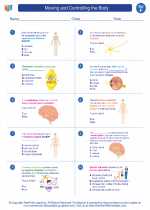Bladder
The bladder is a hollow, muscular organ located in the pelvis that stores urine before it is expelled from the body. It is part of the urinary system, which also includes the kidneys, ureters, and urethra. The bladder is lined with a special type of cells called urothelial cells that allow it to expand as it fills with urine and contract when it is time to empty.
Structure of the Bladder
The bladder is a stretchable organ with a typical capacity of 400-600 milliliters. It is composed of several layers of tissue, including the urothelium (innermost layer), submucosa, muscularis, and serosa. The muscularis layer, made up of smooth muscle, allows the bladder to expand and contract in response to the volume of urine it contains.
Function of the Bladder
The main function of the bladder is to store urine produced by the kidneys until it is convenient to release it from the body. When the bladder is full, it sends signals to the brain, triggering the urge to urinate. At that point, the bladder contracts and the sphincter muscles at the base of the bladder relax, allowing urine to flow out through the urethra.
Common Bladder Disorders
Several disorders can affect the bladder, including urinary incontinence (inability to control urination), urinary retention (inability to empty the bladder), bladder infections, and bladder cancer. These conditions can be caused by various factors such as infections, nerve damage, or anatomical abnormalities.
Study Guide
- What is the main function of the bladder?
- Describe the structure of the bladder.
- Explain how the bladder signals the need to urinate.
- List and describe two common bladder disorders.
◂Science Worksheets and Study Guides Sixth Grade. Moving and Controlling the Body

 Worksheet/Answer key
Worksheet/Answer key
 Worksheet/Answer key
Worksheet/Answer key
 Vocabulary/Answer key
Vocabulary/Answer key
 Vocabulary/Answer key
Vocabulary/Answer key
 Vocabulary/Answer key
Vocabulary/Answer key
